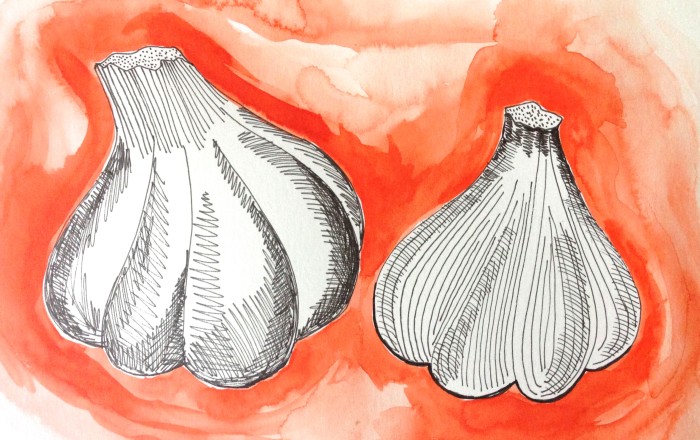teriyaki sauce
by Petit Riz
guest post by Jason Ueda
The first time my mom showed me how to make the sauce, she listed out the ingredients in her pleasant lilt of confidence: a cup of soy sauce, a cup of sugar, 1 to 1, turn on the heat, about this much garlic, the same for ginger, and about thiiis much of mirin. She uses a Japanese brand of pureed ginger and garlic that come in tubes, found next to the wasabi and karashi mustard in any Asian foods market. She told me this is the same recipe we use for shish kebab marinade and for her broiled chicken wings that crisp up outside and fall to morsels when taken hot from the oven.
We were making a glaze for chicken breast well after 8 since my mom worked in downtown LA, about an hour away with moderate traffic. To thicken for a gooey consistency, she added a teaspoon or so of cornstarch in a rice bowl and added a few tablespoons of hot water to make a smooth slurry before dropping it into the simmering pot; it plumed in the convection, she stirred and tasted, offered me a slurp, then with a definitive tap of her spoon over the pot lip, said it was about done.
I don’t add the cornstarch, preferring to reduce. I add more garlic, fine-chopped or grated ginger, easily double what my mom uses, sometimes including toasted chili flake, sometimes going for honey. Once, in Boston visiting friends, I dropped a shy tablespoon of scotch since my friends didn’t have any mirin on hand. It took that smoky wood taste, balanced against the nut of the soy and zip of the ginger. I’m now imagining how a cup or two of bonito stock might refine the contours as a braising liquid for chicken thighs.
My folks came out to visit last fall and since it was close to my father’s birthday, I made teriyaki glazed sockeye steaks with sautéed asparagus and zucchini with white mushrooms, lager-steamed mussels in chopped onion and garlic, and of course, steamed white rice. I reduced the teriyaki to coat the fish, basting twice while the steaks cooked to a hot medium. I love to flavor any fish with this quick sauce as it makes me think of the old Japan in which my grandmother was raised, the taste no doubt that charmed my grandfather, of suppers cooked in the old house off Crenshaw Blvd. in the Japanese neighborhood, the sun setting to announce the return of family members from their day.
On a recent visit back to Orange County, I made the salmon for my father again, this time offering stewed eggplant from his garden with bonito flake. The Angels were playing the Oriels – a thrilling series we unfortunately dropped 1 – 2, but my dad and I enjoyed each other’s company, predicting what the next pitch would be and then sizing up execution, sometimes noting the ump had a low strike zone.
After coming home from an extended lunch with my uncle, I recognized the bone section of the piece neither of us could eat the night before resting on an empty plate. He usually goes to the burger joint down the street if there’s nothing good in the fridge, preferring a fresh BLT over microwaved leftovers. I’m glad he helped himself.
For the sauce:
1 cup of soy sauce
1 cup of sugar
1 tbsp of mirin
1-2 tspns grated ginger
1-2 tspns grated garlic
To thicken quickly: 1 teaspoon of cornstarch prepared separately in a hot water slurry. This will of course, make the sauce less salty than a batch that was only reduced.
Heat on low till a simmer, making sure the sugar and aromatics incorporate evenly. Continue reducing until desired thickness. I like it thick enough to just coat a spoon’s back. Adjust to taste. Let simmer to tighten up.
You can make additions to this at will. It’s extremely forgiving and blends very well with many flavor profiles. On summer days, we’d make beef and chicken skewers with bell pepper and pineapples, all drenched in the sauce. Sometimes, I cut the sugar in half, and while a bit salty, if you’re using it for glaze, just apply less liberally. I used a microplane to grate, but I’ve also done fine julienne or fine dice for garlic and ginger. The smaller the cut, the less you need.
As a dipping coat for panko breaded chicken tenders (my favorite application) or pan-fried spam slices*, I’d use the original recipe’s sugar amount and make adjustments on the stove. My mom braises still frozen chicken wings in a double portion and once warmed over, spreads the pieces out on a sheet tray to broil. They are undeniable.
* In Hawaii you can find spam and rice musubi at convenience stores next to the bananas and muffins. When I first saw this, it was one of many instances I felt Hawaii was my soul’s natural home.


